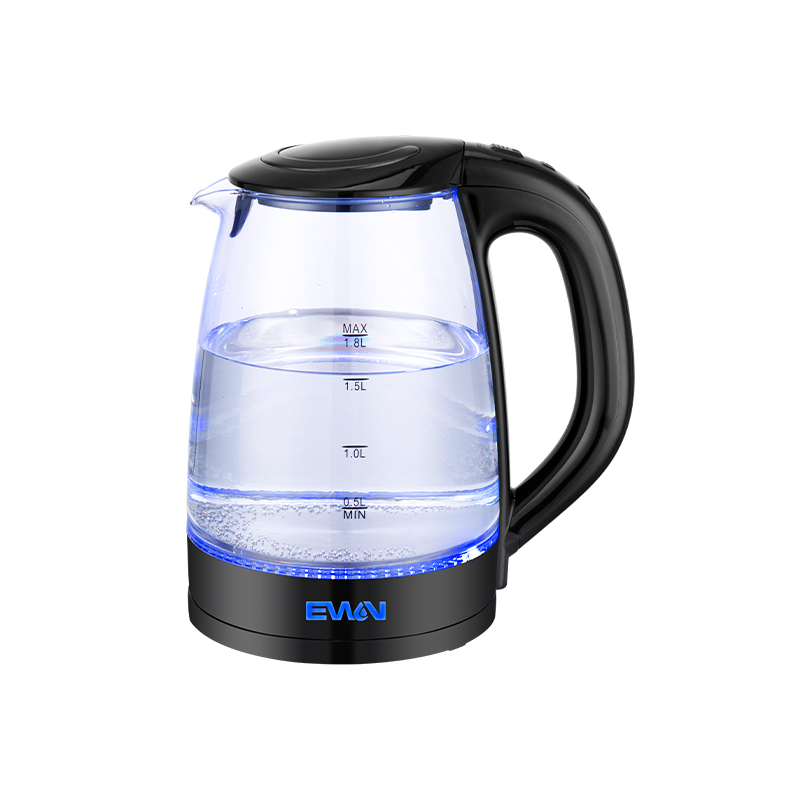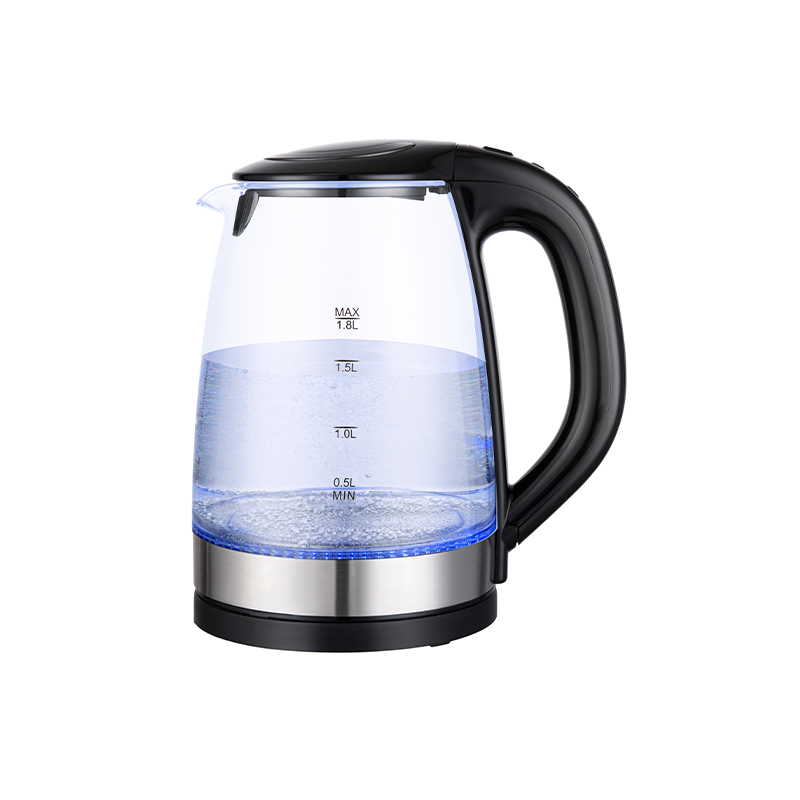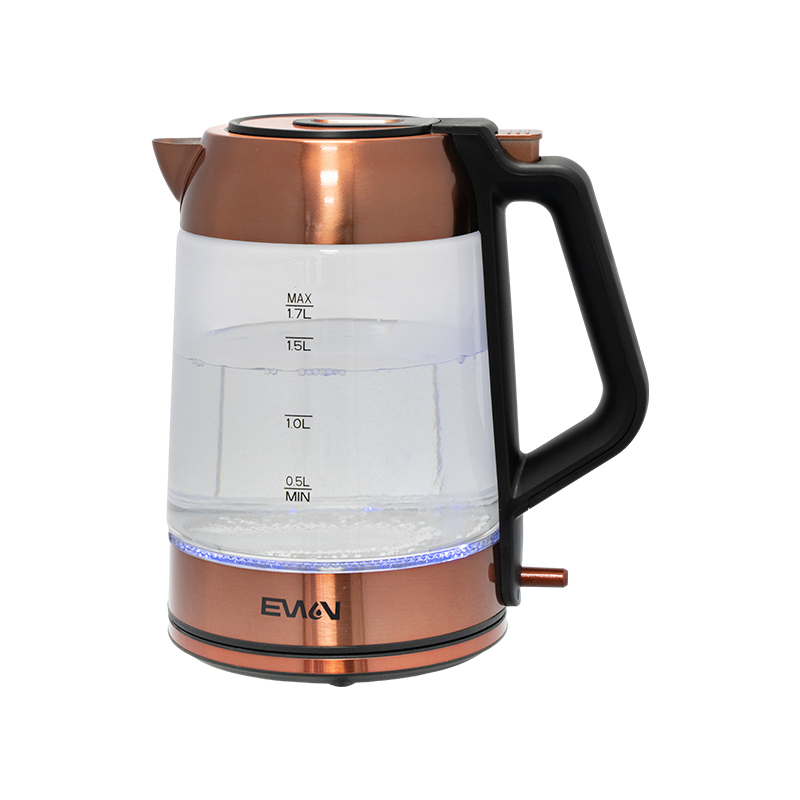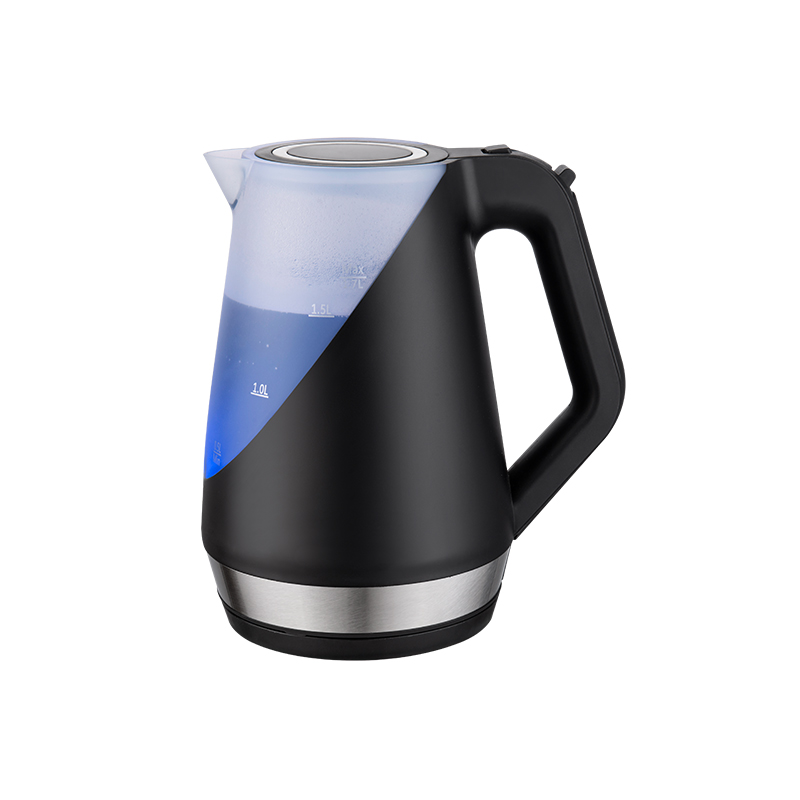+86-18667862027
Web Menu
Product Search
Exit Menu
Does the digital kettle use environmentally friendly or low-power heating technology?
Overview of Digital Kettle Heating Technology
Digital kettles have evolved significantly in recent years, incorporating various technological innovations to improve energy efficiency, heating speed, and environmental performance. Unlike traditional kettles that rely on simple resistive heating elements, modern digital kettles often use precise temperature control systems, smart sensors, and power management features. These advancements allow the appliance to optimize its energy consumption while ensuring consistent performance. As sustainability becomes an important consideration for consumers and manufacturers, the question of whether digital kettles use environmentally friendly or low-power heating technology has become central to product development and market evaluation.
Principles of Heating in Digital Kettles
The heating mechanism in a digital kettle typically involves an embedded electric coil or plate that converts electrical energy into heat. The base of the kettle often contains a thermostatic controller and temperature sensors that regulate the current flow to achieve accurate temperature settings. Some advanced models use induction heating or low-resistance metal alloys to improve efficiency. The primary goal of these systems is to transfer energy to the water quickly while minimizing losses due to heat dissipation or standby energy consumption. Through smart power modulation, digital kettles can achieve more consistent and efficient heating compared to standard electric kettles.
Energy Efficiency and Environmental Impact
Energy efficiency directly affects the environmental footprint of a digital kettle. Efficient kettles consume less electricity for each boil cycle, reducing carbon emissions associated with power generation. Many manufacturers have developed systems that automatically cut off power once the desired temperature is reached or when no water is detected, preventing unnecessary energy use. Additionally, some designs feature insulation layers or double-wall construction to retain heat longer, reducing the need for reheating. These innovations contribute to energy conservation and align with broader environmental goals such as reducing household energy waste.
Comparison Between Traditional and Digital Kettles
The following table compares typical performance characteristics between traditional electric kettles and modern digital kettles in terms of energy use, heating control, and environmental benefits.
| Feature | Traditional Kettle | Digital Kettle |
|---|---|---|
| Heating Control | On/Off switch only | Precise temperature control with sensors |
| Energy Efficiency | Moderate, often wastes power after boiling | High, due to automatic shutoff and temperature regulation |
| Environmental Impact | Higher electricity use and more frequent reheating | Reduced energy consumption and lower emissions |
| Safety Features | Basic thermostat | Smart sensors prevent overheating or dry boiling |
| Material and Insulation | Single-layer design | Double-walled with thermal insulation |
Low-Power Heating Technologies
Some digital kettles integrate low-power heating technologies designed to optimize energy use without compromising performance. These systems often rely on pulse-width modulation or variable power control circuits that adjust the heating intensity based on the water volume and desired temperature. This method prevents full-power operation when it is not required, leading to measurable reductions in electricity consumption. Additionally, microprocessor-based control units can learn usage patterns and pre-adjust heating cycles to improve efficiency over time. The result is a kettle that operates with reduced energy demand while maintaining functionality and user convenience.
Use of Environmentally Friendly Materials
Beyond energy efficiency, the environmental performance of a digital kettle is influenced by the materials used in its construction. Many manufacturers are replacing non-recyclable plastics with recyclable or biodegradable alternatives, as well as using stainless steel or borosilicate glass that have longer lifespans and reduced environmental impact. The production of durable components minimizes waste by extending product life, while modular assembly allows for easier disassembly and recycling. These design choices contribute to a more sustainable product lifecycle, aligning with environmental management standards and consumer expectations.
Smart Features Supporting Energy Conservation
Modern digital kettles are equipped with intelligent features that indirectly promote energy savings. For instance, keep-warm functions operate at low wattage levels, maintaining the desired temperature without repeated full heating cycles. Automatic shutoff and boil-dry protection ensure that no energy is wasted once the water reaches boiling point or if the kettle is empty. Some advanced models include timers, programmable heating schedules, and mobile app integration, allowing users to control energy use more efficiently. Together, these technologies provide both convenience and environmental benefits.
Temperature Control and Power Optimization
Precise temperature control systems in digital kettles reduce unnecessary energy usage by heating water only to the temperature required for a particular application. For example, brewing green tea at 80°C consumes less energy than boiling water at 100°C. By offering adjustable temperature settings, digital kettles minimize wasted power and extend component life by reducing thermal stress. Power optimization algorithms analyze real-time temperature data and modulate current flow to achieve efficient heating. This precision contributes to consistent performance and energy savings over repeated cycles.
Durability and Lifecycle Efficiency
Durability plays an essential role in determining the overall sustainability of digital kettles. A longer-lasting appliance requires fewer replacements, leading to lower resource consumption over time. Manufacturers are improving product lifespans through corrosion-resistant materials, high-quality insulation, and reliable electronic circuits. Furthermore, efficient manufacturing processes and compliance with international environmental standards, such as RoHS or energy labeling programs, indicate a commitment to minimizing the ecological footprint. Lifecycle efficiency, which includes energy use, maintenance requirements, and recyclability, determines how environmentally responsible a digital kettle truly is.
Challenges in Implementing Green Technologies
Although many digital kettles now feature energy-saving and environmentally conscious designs, some challenges remain. Incorporating smart sensors, microprocessors, and advanced materials can increase production costs and resource consumption during manufacturing. Balancing affordability with sustainability requires careful design optimization. Additionally, the electronic waste associated with complex digital components must be managed responsibly to prevent environmental harm. Effective recycling programs and modular construction can help address these issues, ensuring that digital kettles remain both energy-efficient and environmentally responsible.
Consumer Behavior and Energy Savings
The way consumers use digital kettles also impacts their environmental efficiency. Heating only the amount of water needed, regularly descaling the heating element, and unplugging the appliance when not in use can further reduce power consumption. Many manufacturers now educate users about efficient operation through manuals or app notifications. Smart systems may even provide feedback on energy usage, encouraging responsible behavior. Therefore, both technology and user habits play complementary roles in achieving real-world energy savings and environmental protection.
Comparative Analysis of Power Consumption
The following table summarizes typical power consumption and efficiency levels for different categories of digital kettles based on capacity and design.
| Category | Capacity (Liters) | Average Power (Watts) | Estimated Boiling Time (Minutes) | Efficiency Level |
|---|---|---|---|---|
| Standard Digital Kettle | 1.5 | 1800–2000 | 3–4 | High |
| Eco-Friendly Digital Kettle | 1.5 | 1500–1600 | 4–5 | Very High |
| Large-Capacity Smart Kettle | 2.0 | 2000–2200 | 5–6 | Moderate |
| Compact Low-Power Kettle | 1.0 | 1200–1400 | 3–4 | High |
Future Trends in Digital Kettle Technology
The future of digital kettle design lies in further integration of low-power technologies, renewable energy compatibility, and smart connectivity. Researchers are exploring heating systems that utilize graphene-based elements and thermoelectric materials, which can reduce energy waste and enhance heat distribution. Integration with home energy management systems will allow users to schedule heating during low-demand periods or when renewable energy is available. Moreover, the development of recyclable electronic components will help reduce environmental impact during disposal, supporting a circular economy model.
address
No.935 Qiye Road, Zhouxiang Town, Cixi City, Zhejiang Province, China
Sale’s Email
leila@nbewin.com
sales8@nbewin.com
sales9@nbewin.com
Copyrighte Ningbo Ewin Electrical Appliances Co., Ltd. All Rights Reserved.












